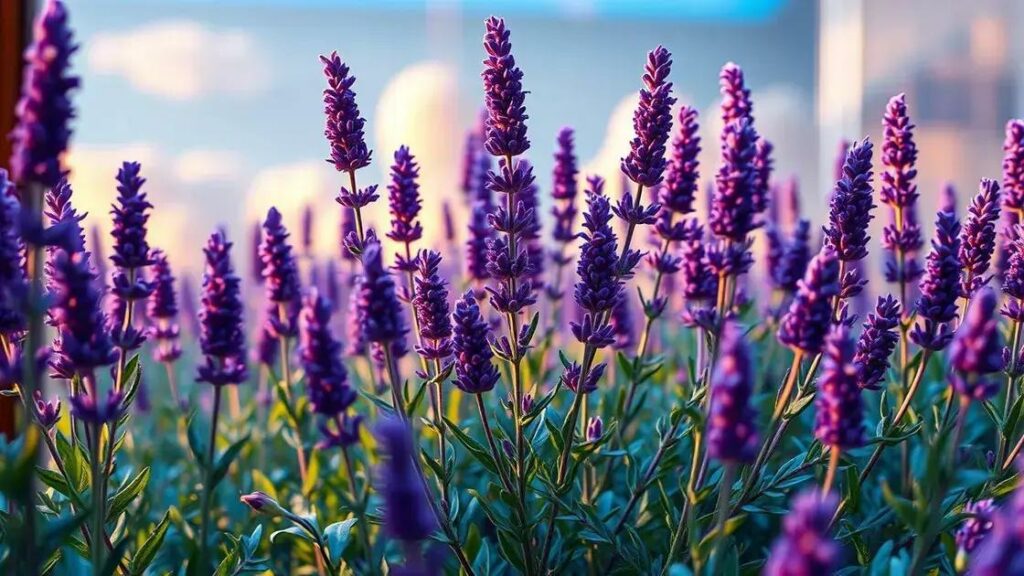How to care for a lavender plant indoors may seem simple, but there are some secrets to success that can truly transform your plant’s health. Understanding its unique needs is crucial to making it thrive. This guide will reveal essential tips to ensure your lavender stays vibrant and flourishing.
Table of Contents
ToggleEssential sunlight requirements for a thriving lavender indoors
Essential sunlight requirements for a thriving lavender indoors are crucial because lavender relies heavily on adequate lighting to grow well. Understanding the light preferences of your lavender plant can significantly improve its health and longevity.
Lavender plants thrive best in bright, direct sunlight, which mimics their natural habitat. Here are some key factors to consider for optimal sunlight:
- Sunlight Duration: Lavender needs at least 6 to 8 hours of direct sunlight daily.
- Window Placement: Position your lavender near a south-facing window for maximum exposure.
- Supplemental Lighting: In low-light conditions, consider using grow lights to supplement natural light.
In addition to sunlight requirements, indoor lavender care also involves understanding how light affects its growth:
- Signs of Insufficient Light: If your lavender is stretching toward the light or showing pale leaves, it’s a sign it needs more bright sunlight.
- Too Much Sunlight: Conversely, if the leaves appear scorched or brown, it may be getting too much direct sun.
Understanding light intensity
The quality and intensity of sunlight are just as important as the duration. Consider the following:
- Indirect Light: While lavender loves direct sun, bright indirect light can help during particularly hot months.
- Sunlight Proximity: The closer the plant to the window, the more intense the light. Ensure your lavender is within a foot of the window for best results.
Recommended practices for sunlight
To make the most out of your lavender’s lighting conditions, follow these recommended practices:
- Rotate Your Plant: Regularly rotating the lavender pot can help ensure all sides receive equal light exposure.
- Monitor Seasonal Changes: Adjust the positioning of your lavender based on the changing sunlight patterns with the seasons.
Incorporating these essential sunlight requirements into your exploring indoor gardening techniques will create a thriving environment for your lavender plants and contribute to their overall health.
Best watering practices for indoor lavender plants

Best watering practices for indoor lavender plants are vital for ensuring your plant remains healthy and vibrant. The right amount of water, along with proper drainage, plays a key role in keeping lavender thriving indoors.
Lavender prefers well-drained soil, which means it is essential to manage moisture levels without overwatering. Here are some key guidelines:
Understanding watering needs
To effectively water your lavender, consider the following:
- Watering Frequency: Water the plant thoroughly, allowing the soil to dry out completely between waterings.
- Environmental Factors: Factors such as humidity, temperature, and pot size will influence how often you need to water.
Signs of overwatering and underwatering
It’s crucial to recognize the signs indicating whether your lavender is receiving too much or too little water:
- Overwatering: Yellowing leaves, root rot, or a mushy stem are clear indicators of excess moisture.
- Underwatering: Wilting or crispy leaves indicate that your lavender needs a drink.
Tips for effective watering
Consider these best practices to ensure your indoor lavender gets the right amount of water:
- Use potting mix: Choose a well-aerated potting mix that allows water to drain quickly.
- Water early in the day: Water your lavender in the morning to prevent moisture accumulation overnight.
- Test the soil moisture: Stick your finger in the soil about an inch deep; if it’s dry, it’s time to water.
Watering tools and techniques
Using the right tools can make watering more efficient. Consider using:
- Watering can: A narrow spout can help control the volume of water you pour.
- Humidity trays: Placing plants on trays filled with stones and water can maintain ambient humidity.
By following these best watering practices, you can help maintain healthy indoor lavender plants. For more tips, check out exploring indoor gardening techniques that enhance your plant care knowledge.
Soil and potting tips for healthy lavender growth
Soil and potting tips for healthy lavender growth are essential to ensure your plants thrive indoors. The right type of soil and pot can significantly impact lavender’s health and overall growth.
Lavender requires well-draining soil to prevent root rot. Here are key considerations for the appropriate soil and potting:
Selecting the best soil type
Choose a soil mix tailored for lavender or herbs, ensuring it drains well. Look for:
- Soil Composition: A mix containing sand, perlite, or gravel can enhance drainage.
- pH Level: Lavender prefers a slightly alkaline pH between 6.5 and 7.5 for optimal nutrient absorption.
Choosing the right pot
Pot choice plays a vital role in lavender’s success. When selecting pots, consider the following:
- Drainage Holes: Ensure the pot has adequate drainage holes to prevent excess moisture.
- Size: Choose a pot that is at least 6-8 inches in diameter, giving roots room to grow.
- Material: Terracotta pots are ideal as they help wick excess moisture away from the soil.
Potting and transplanting techniques
When planting or repotting lavender, follow these steps to promote healthy growth:
- Fill your pot: Fill your chosen pot with the suitable soil mix, leaving about an inch of space on top.
- Position your plant: Place the lavender in the center of the pot, ensuring the root crown is level with the soil surface.
- Water lightly: After potting, give it a light watering to help settle the soil without saturating it.
Maintaining soil health
To keep the soil healthy, consider these maintenance practices:
- Top-dressing: Add a layer of fresh soil or compost on the surface yearly to replenish nutrients.
- Monitor moisture levels: Use a moisture meter to ensure the soil remains well-drained but adequately moist.
By following these soil and potting tips, you can create an ideal environment for your lavender. For more insights, consider exploring indoor gardening techniques to enhance your gardening skills.
In conclusion
How to care for a lavender plant indoors encompasses essential elements like sunlight, watering, soil, and potting techniques. By understanding and implementing the best practices we’ve discussed, you can cultivate a thriving indoor lavender garden that delights your senses.
Remember, observing your plant’s responses to care and adjusting accordingly is key to successful growth. For more tips on enhancing your indoor garden, continue exploring resources that empower your gardening journey.

